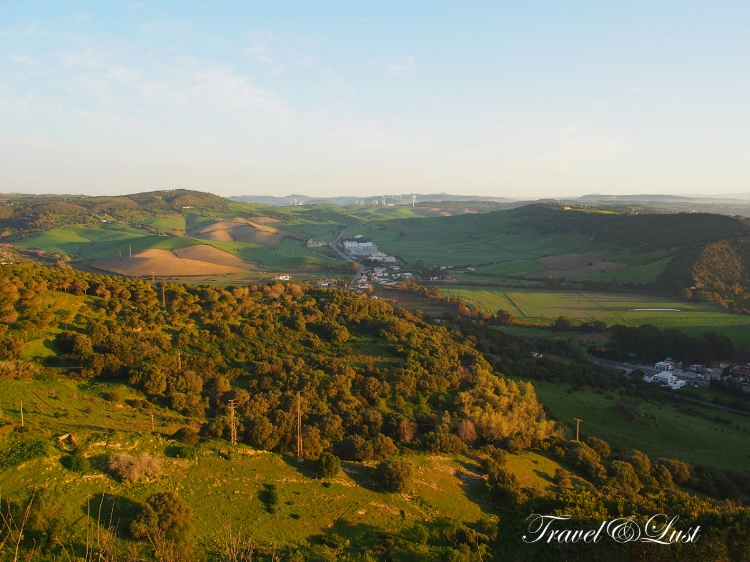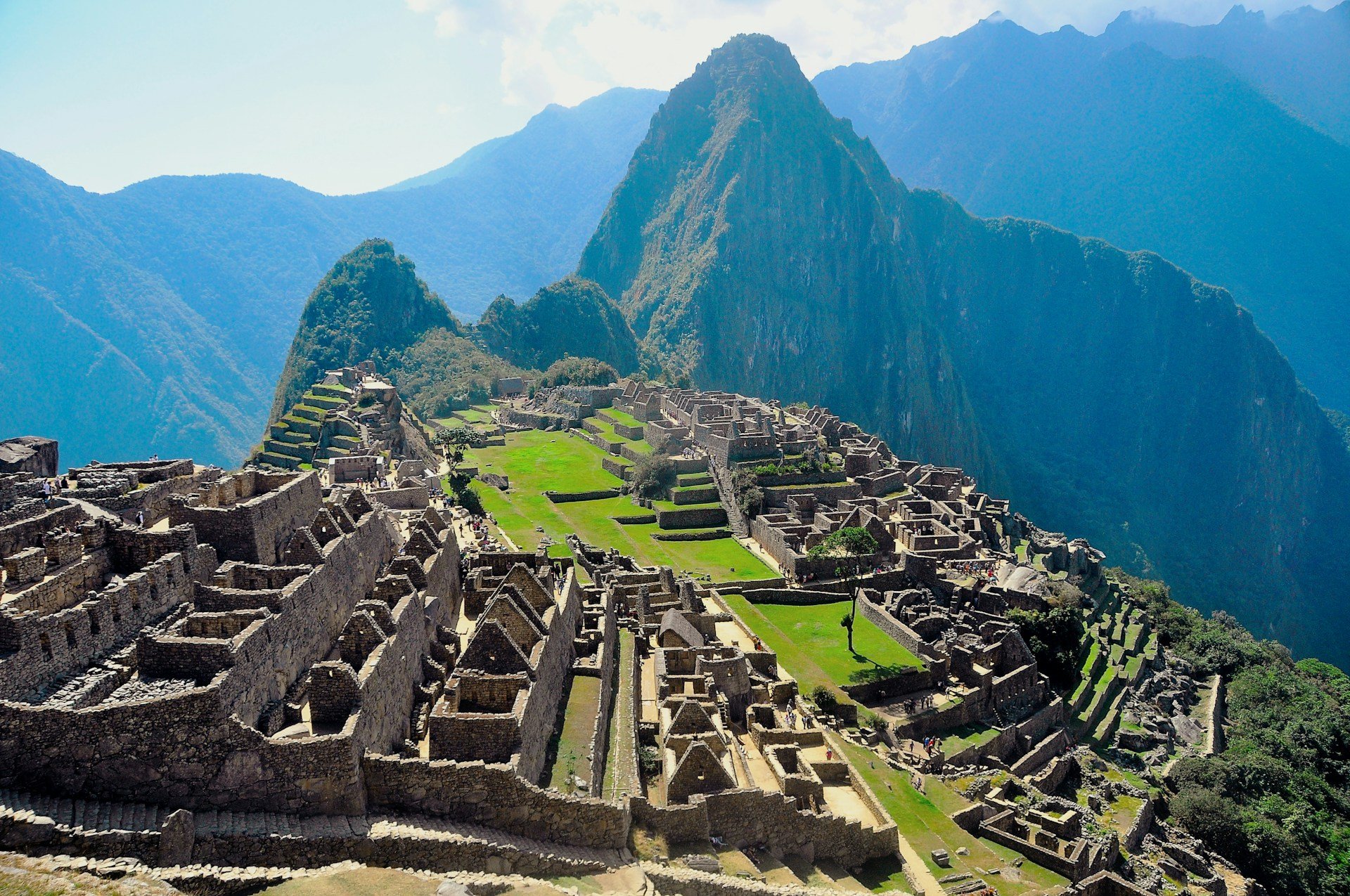Vejer de la Frontera - Costa de la Luz Gem
The white-washed, hilltop town of Vejer de la Frontera unquestionably constitutes an oasis in the region of Andalusia in southern Spain. Only 10 minutes drive from the picturesque beach of El Palmar, this beautiful setting is one of the most alluring towns on Spanish soil. For history buffs, this petite find is a place with special appeal for being an enclave for southern Europe's oldest civilisations, the Phoenicians, Carthaginians and Romans. It is known to have been populated since Paleolithic Age and was fortified in the Bronze Age. It has also been occupied by Muslim rules (exactly twice) and finally conquered by the Christians in 1285, under the leadership of Sancho IV.
Street view from the tower of Casa del Mayorazgo - a manor house in Baroque style from the 18th century
Vejer's cobbled helter-skelter streets wind their way around the hill and unfold into shady squares with tiny bars, almost never changed for centuries. As we wandered the serpentine streets, the amiable locals received us with a hola, and some let us enter their prized interior patios to take pictures. We were grateful for this as we could shade ourselves from the warm weather. One of the best places for views above the main square Plaza de España is atop Casa del Mayorazgo, an 18th-century manor house that was once the ancestral home of King Sancho. Nowadays, several families live in this small community, and they let you visit during a set of hours that you can see on the entrance door. There are no admission fees, but you shall be generous enough to leave a tip in the mailbox, as the money covers the costs of maintaining the main patio and tower. Although Vejer has dozens of beautiful patios, some of the best examples to visit are the Palacio Castrillón and the Casa de las Viudas. These properties were also once-great houses owned by wealthy families. To learn more about Vejer’s patios, we recommend picking up the book ‘Los Patios de Vecinos de Vejer de la Frontera’ by Jesús Melero Callado Manuel, available at the library in Vejer.
The old town has always established itself as being quite artsy and has a reputation for maintaining its craftwork tradition. Expect to find hand-made objects in a number of stores, especially around the Jewish quarter. Artesanía La Soleá (Juan Bueno nº7) and Artesanía y Alimentación Juan María (Canalejas nº4) are famous for their craftworks, and Cestería Juani Marchán (Trafalgar nº7) is a basket shop famous for producing wicker baskets. If you wish to take back home some local treats, gourmet shops Ya En Tu Casa (Corredera nº17) and Colmado Selecto Palomita (Remedios nº1) both are customer-orientated and let you taste some things before buying. Think orange wine, Payoyo cheese and Andalusian almond biscuits!
Historical architecture buffs can admire the Parish Church of the Divine Savior (El Divino Salvador), formerly built on the site of an ancient mosque. This is on one of the old town's highest points, in which you can capture some of the best views. The Convento de los Concepcionistas is another must-visit, as the property was built in 1552, and today, it is home to the Vejer Museum of Traditions and Customs. For culture buffs, this is where you can get a genuine insight into the history of Vejer, and it is a great place to understand the town´s past. Many ancient buildings of Islamic style have been reconverted after the conquests of new rulers, so expect many buildings to have Andalusian-Arabic influences.
Statue Las Cobijadas in honour of the typical mantle-dress of Vejer. Its origin is said to be Castilian, from the 16th century
In addition to its arts and culture, Vejer attracts many visitors because of the town's famous gastronomic appeal. Andalusian and international food can be enjoyed here at its finest, with both Arab-influenced Andalusian and modern cuisine to be savoured. There is a wide variety of establishments; such as corner bars Tapas y Vinos El Aljibe (Calle San Francisco nº1), and the interior patio of a hotel serving Moroccan dishes, such is the case of El Jardin del Califa. A new addition from the Califa group has opened on the street Calle de la Corredera nº55 with their restaurant, Corredera 55 (named after the street address). This is your place if you are craving Spanish food, an extended selection of desserts (think lemon meringue pie), and charming outdoor views.
El Jardin del Califa: this is a mixed dish with hummus, babaganush, feta cheese, Marrakech salad and Tabulé
Vejer has also recently been slowly picking up on the contemporary art scene. Instalments like the Casa del Arco are becoming an interesting cultural centre for exhibitions, concerts and additional proposals. La Casa del Arco is a private space with art and design that changes with the seasons, bringing in new guest artists. All interested artists or groups are encouraged to send feedback and suggestions, as the curators like to connect the critics with the artists. Also, you can find NMAC Foundation Montenmedio Contemporary Art outside the old town. This is a project that links the relationship between art and nature in a beautiful outdoor setting.
Arco de las Monjas in the Jewish quarter
If you know Vejer or if you know Chefchauen (Chaouen, a blue town in northeast Morocco), you will have been as in love with the environment as the Moroccan emir Sidi Ali Ben Rachid once had. The birth of the beautiful Chefchauen has a legendary love story. Sidi Ali Ben Rachid fell in love with a Spanish woman named Zhora, who was from Vejer, but the conquering of Christian rule came about and forced out the Arabs (now Maghribi), so the emir replicated his lover´s home in a Berber mountain village in Morocco which is known today as Chefchauen. Vejer was under 500 years of Arab rule, therefore you can trace back some of the influences that are visible to this day, such as the cats roaming the streets, irregular alleys (like a Medina), and whitewashed houses, and some similarities in the gastronomy.
The Arabic pastry tradition in Vejer has lived on thanks in part to the local company Xauen Dulces Artesanos de Vejer. The business arises from the entrepreneurial conviction of two sisters, Magdalena and Oliva, who specialise in honey-covered Arabic sweets. If you feel like having a taste of Arabic cuisine to eat on the go, bakery Ajonjolí (Nuestra Señora de la Oliva nº29) has gazelle horns (Kaab Ghzal), brizat, chebakia and other delicious bites to take away.
Friendly cat in the old town
Vejer is a town to enjoy repeatedly. There is a myriad of walking trails, a surfer's haven nearby (El Palmar) and dozens of outdoor activities to enjoy. The capital of Cádiz is less than an hour away, as is the famous bohemian town Tarifa. Vejer is also a great base for a road trip around the paradise sights in the southwest of Andalusia. Dutch-owned boutique guesthouse Casa Bonhomia has opened in late 2018 and houses 6 rooms, all with a contemporary design and embodying traditional Andalusian touches. Another great property to unwind in is in the Jewish quarter. This is Hotel V…, a boutique gem with a spacious rooftop that overlooks the Roman and Moorish heritage of the historic centre and on most days has eye-catching sights of the Atlas Mountains in neighbouring Morocco. This former 17-century Spanish palacio brings out the romantic, with dim-lit settings, a plunge pool on the rooftop and massage services.
Once you visit Vejer, it will be of no surprise why it has been voted the most beautiful rural town in Spain on a number of occasions. It is easy to be drawn to this paradise. Although it is an all-year destination, to get the most out of your visit, the months of late March to early October are when you can enjoy the longer hours of the day. For the latest news in Vejer, visit the official Vejer Tourist Office website.
You will be spoilt with the many view points overlooking both the coastline & the cork oak studded hills of the ‘Alcornocales’ Natural Park
If you're taking a road trip to Andalusia, make sure you stop off at Seville. From the grandeur of the Alcázar Palace to the labyrinthine streets of the Santa Cruz neighbourhood, Seville enchants with its Moorish heritage, awe-inspiring architecture, and tantalising cuisine. Let this Seville travel guide be your companion should you consider spending time in the vibrant city.











